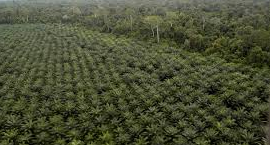By Chad Shoop, Investment Analyst
Do you know what lipstick, ice cream, shampoo, cereal, and biofuel have in common?
They all possess one commodity in common that most people have never heard of.
In fact, almost no one is talking about it, but it stands to earn investors more than 90% in the coming months as El Niño dampens production. Prices for this commodity are going to soar, but demand is unlikely to slow among consumers.
The little-known commodity found in your home pantry is palm oil.
With more than 49 million tons used each year, it’s the world’s leading oil product for consumption, ahead of both soybean and rapeseed oils. But the reason you may have never heard of it is because palm oil typically falls under “vegetable oil” on our ingredient list.
Palm oil can be found in a multitude of your everyday products, and it’s often in brand name products, such as Johnson and Johnson baby shampoo, Kit Kat candy bars, Dove soap, Ritz crackers, Gillette shaving cream, and Pringles chips to name a few.
What’s more, palm oil is the staple cooking oil in nearly every kitchen among the rapidly growing middle class in countries such as China, Singapore and Indonesia …
Basically, there is constant demand for palm oil, and it continues to grow year after year. In fact, worldwide demand for palm oil is expected to double by 2020. So any shock on the production side can have a dramatic impact on pricing for the hot commodity — and El Niño has, historically, made a significant impact on production.
El Niño Means Big Gains for Palm-Oil Companies
While most news outlet have been slow to jump on it, El Niño is going to have a significant impact on a variety of industries around the globe. Our in-house meteorologist, Chris Orr, has been on top of it since the beginning of the year.
He has predicted that this El Niño will likely come in as the third most intense in modern times (the El Niño of 1997 to 1998 still stands as the worst in modern history). What’s more, Chris expects this El Niño to linger through the fall of 2015.
During El Niño, hot water shifts from off the coast of Asia toward Peru. In doing so, it creates a very dry climate in Southeast Asia, wreaking havoc on all types of weather-sensitive crops.
This very dry and extremely hot climate puts significant strain on palm-oil trees, leading to lower yield, which results in higher prices for the oil.
After looking back at the most-recent El Niño’s, we get an idea of the impact it has had on crops and prices.
Going back to the 1980s, we find that any moderately strong El Niño period, like Chris expects this current one will be, caused a significant loss in production. During a weak El Niño in 2006 to 2007 and a moderate one in 2009 to 2010, the price of palm oil surged 55% and 117%, respectively, due to a decline in production. Based on the intensity Chris believes this El Niño is packing, we should easily be on the high end of this range.
Simply put, El Niño is a major catalyst to the palm-oil sector, and one of Jeff’s recommendations stands to return more than 90% in the coming months.
Falling Yield Versus Rising Price
The question you want answered as an investor is: Does falling yield or rising prices play a more significant role for a palm-oil company?
With the decrease in production and surge in prices, you might have thought palm-oil stocks would have performed poorly. Instead, these stocks thrived, benefiting from the higher prices amidst robust demand.
El Niño may be causing chaos for palm-oil farmers, but it doesn’t mean consumer are going to suddenly stop washing their hair, brushing their teeth, or eating many of their favorite foods. Demand is going to continue to rise — pushing prices higher with it — and those companies that can get their product to market are going to benefit.
Shares of palm-oil companies, on average for the industry, climbed 60% during the 2006 to 2007 El Niño season and climbed 100% in the 2009 to 2010 season.
But the company Jeff recommended to Profit Seeker subscribers climbed more than 90% in each of the last two El Niño seasons.
That’s probably because Jeff picked this unique company for a specific reason — it has young palm-oil trees. These younger trees tend to be more productive and not as affected by the weather, while some of the older trees may see a significant drop in production.
This surge in prices will boost the company’s bottom line, and should send shares climbing more than 90% in the coming months.
Palm oil is just one of the many commodities that will be impacted by El Niño during the coming months. We will continue to look for more opportunities for you to diversify your wealth and take advantage of strong trends.

